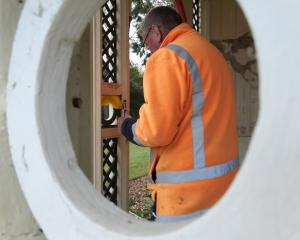Initiatives are being undertaken by the Waitaki Resource Recovery Trust to recoup a small loss in the first three months of this financial year, caused by lower returns on recycled materials.
The trust has released its quarterly report to the end of September which showed income, including grants from the Waitaki District Council and donations, of $172,409, while total costs, including wages of $110,846, were $195,854.
That resulted in an operating loss of $23,445.
Since then, the trust has already reduced staff at the Chelmer St resource recovery park by three full-time equivalent positions, made provisions to handle more construction and demolition material and discussed recycling materials with contractors building the Inner Mongolia Yili Industrial Group Glenavy milk processing plant.
Trust manager Marian Shore said contributing to the loss was a drop in export commodity prices, lower volumes of material and statutory wage increases.
Operating and general overhead costs were held and reduced in line with loss in income, she said.
For the first three months, the trust diverted 849 tonnes of material from the landfill.
There were positive moves during the first three months and the park continued to mentor many ''volunteers'' through work training schemes, Corrections, restorative justice and police early intervention projects.
Although some markets for plastics were lost, the trust's high-quality product resulted in others being secured.
However, the new Anchor light-proof containers were problematic for all recyclers. Standard milk bottles fetched $460 a tonne, but the light-proof containers $350 because the black liner limited re-use.
Another addition was recycling about 49,000 wooden trays from Rainbow Confectionery, saving 880cu m from landfill.
Some were bought by the public from the park, some by scouts and made into kindling, but the majority went towards starting a business making them into planters.
The television ''take back'' scheme was hugely successful, the Waitaki district receiving the largest number of any district per population in New Zealand. From an original target of 896 televisions, more than 1800 were handled.
Since then, the trust had signed a contract with RCN E-Cycle to handle increasing volumes of e-waste, some of which were dismantled and recycled while some computers could be refurbished and sold through the park.




